TechRadar Verdict
The Xiaomi Redmi Note 11 Pro Plus won’t leave you as breathless as saying its name will, but it’s a fine phone for the price. It’s very quick to charge, and has a screen, processor and battery life that get you your money’s worth. We were disappointed by the camera quality though, and the phone won’t win any beauty contests either.
Pros
- +
Incredibly quick to charge
- +
Good screen for price
- +
Intuitive fingerprint scanner
Cons
- -
Cameras aren’t great
- -
Utilitarian design
- -
Too big for some
Why you can trust TechRadar
Two-minute review
What’s in a word? Not much, according to Xiaomi: if you know much about the Redmi Note 11 Pro, you’re not going to find many surprises with the Pro Plus, despite the extra word plonked on the end of its name.
This Xiaomi Redmi Note 11 Pro Plus review completes our look at Xiaomi’s early-2022 family of affordable Redmi phones. The Pro Plus joins the aforementioned Pro and also a standard Note 11 - well, it presumably completes the set, though with this habit of additive-titling we could see more in the future.
Xiaomi is using the Note 11 Pro Plus to showcase tech we’ve already seen in more premium phones in its lower-end devices, We haven’t seen some of this tech in handsets this cheap before.
The flagship feature in the Redmi Note 11 Pro Plus is the 120W fast charging, which we’ve seen in the Xiaomi 12 Pro and the Mi 11T Pro, but not in anything as affordable as the Pro Plus. It powers the phone up to full in just 15 minutes, and banishes overnight charging into the annals of history.
The other big upgrade this Redmi boasts over its siblings is a better chipset - the Dimensity 920 here is a mid-range chip, providing more power and smarter AI than the lower-end silicon used for the Note 11 and Note 11 Pro.
Beyond those features, this is largely the same phone as the Redmi Note 11 Pro - it has a big FHD+ 6.67-inch screen, three rear cameras led by a 108MP monster, and MIUI software laid over Android 12.
While the Xiaomi Redmi Note 11 Pro Plus gets all the perks of the non-Plus - and then some - it also inherits nearly all of that phone’s rough edges too, so it might not win over people who were on the fence about the other family members.
The biggest issue here is the camera - despite the 108MP sensor looking powerful on paper, it doesn’t return great results in the field.
We found that the Xiaomi Redmi Note 11 Pro Plus just isn’t great as a simple point-and-shoot camera: when we treated it like one, we stumbled into issues like skies that were blown out, animals that were out of focus and details in darker areas that were completely lost.
Sure, you can avoid a lot of these issues - like focus and overexposure problems - by spending loads of time framing the shot just right or fiddling with settings, but if you’re trying to grab a quick snap of a pet doing something funny or a treasurable moment on a lovely day, you don’t want to waste any time.
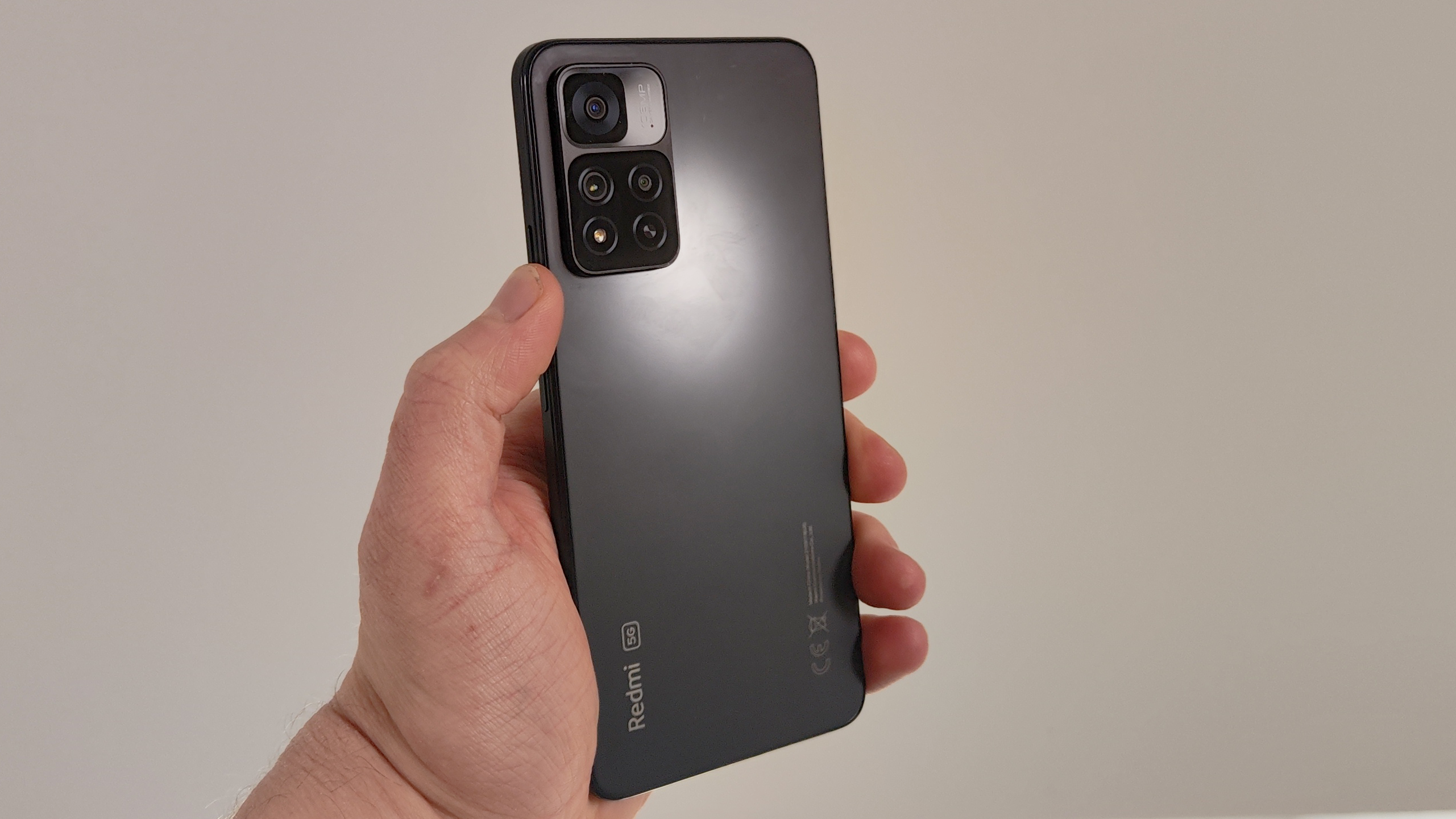
The Note 11 Pro Plus won’t exactly win any beauty contests either; it’s big and bulky, and will stretch your mitts if you don’t have giant digits. Given that Vivo, Realme and Samsung are all showing us how good-looking budget phones can be, and that Xiaomi’s own Pocophone has attractive budget mobiles, the Redmi has no excuse.
That said, the side-mounted fingerprint sensor is incredibly intuitive, and it works better than most other phones’ alternatives.
Most of our issues with the Xiaomi Redmi Note 11 Pro Plus can be overlooked because of the price. The cost straddles the border between budget and mid-range, though it lists closer to the former; at this price you don’t expect breathtaking photos, or a svelte design, and the Redmi jumps ahead where it matters.
Xiaomi Redmi Note 11 Pro Plus price and availability
- Launched in April 2022
- Follows from Note 11 and Note 11 Pro
- Costs £369 (roughly $480, AU$650)
Weight: 204g
Dimensions: 163.7 x 76.2 x 8.3mm
Display size: 6.67-inch
Resolution: 1080 x 2400
Chipset: Dimensity 920
RAM: 6/8GB
Storage: 128/256GB
Rear camera: 108MP + 8MP + 2MP
Front camera: 16MP
Pre-installed software: Android 11
Battery: 4,500mAh
Charging: 120W wired
The Redmi Note 11 Pro Plus was launched two months after its siblings, in April 2022, with a release date later in May.
You can pick up the phone in the UK, but Xiaomi doesn’t launch its phones in the US. It sometimes does in Australia, so we could see a release there in the near future, but don’t take it for granted.
The phone costs £369 in the UK - that converts to about $480 or AU$650, putting the phone’s price just a hair above that of its siblings.
Xiaomi Redmi Note 11 Pro Plus design
- Similar design to Note 11 Pro
- Intuitive side-mounted fingerprint scanner
- Has 3.5mm headphone jack
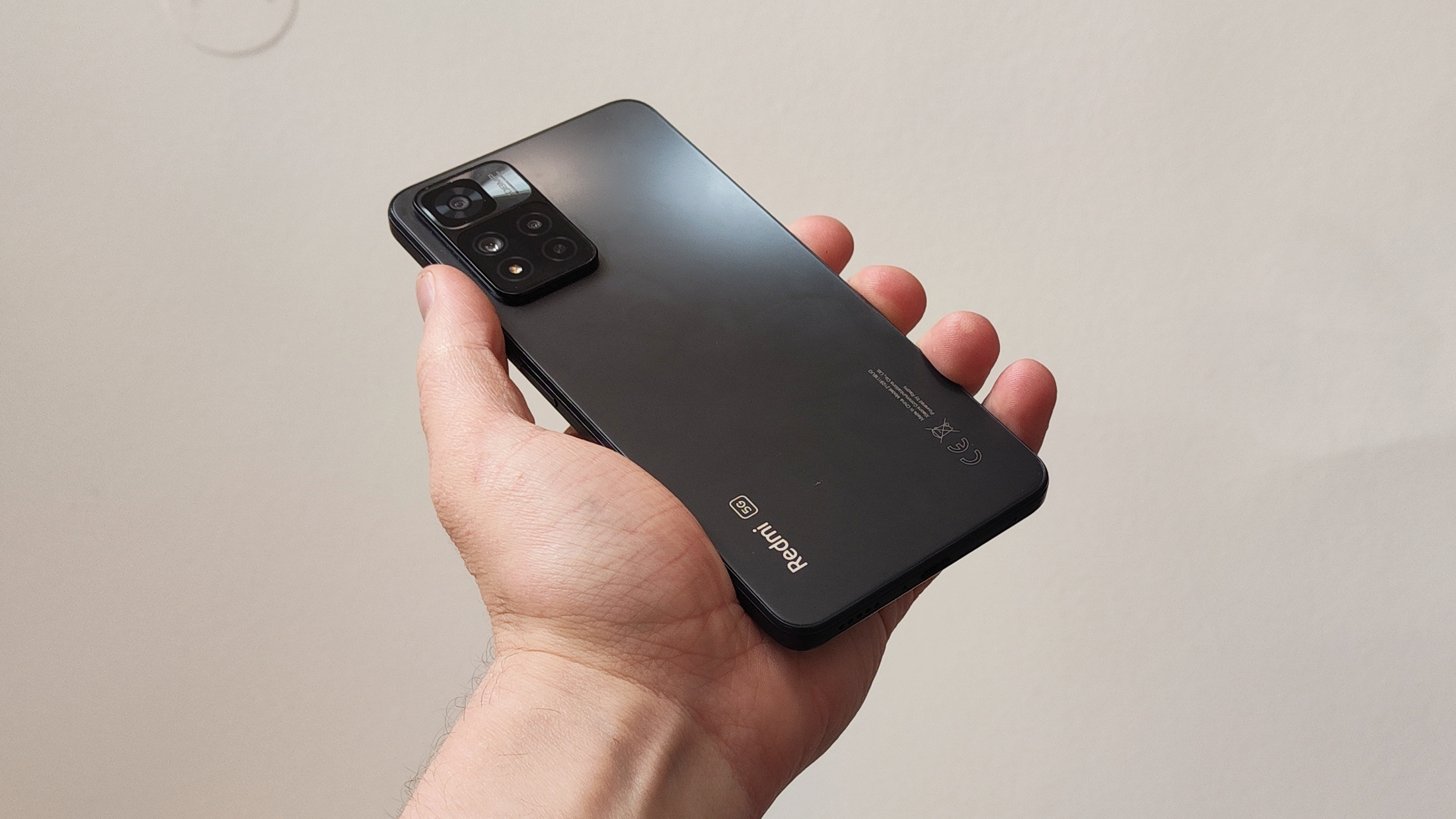
If you can tell the Xiaomi Redmi Note 11 Pro Plus apart from its non-Plus sibling without prompting, you deserve a medal: the handsets look near-identical, save for a slightly-redesigned camera bump.
This is your standard ‘chocolate-bar’ smartphone - if you want a more unique design, you have to pay a lot more. Around the edge, there’s a USB-C port, 3.5mm headphone jack, volume rocker, and power button with the fingerprint sensor built in. The latter is very intuitive and quick to use, which makes unlocking the phone a breeze.
Xiaomi has made the interesting - though not unwelcome - decision to use a glass back panel for the phone, as apparently, plastic doesn’t befit a ‘Pro Plus’ phone. The handset feels nicer to hold as a result.
With an IP53 rating, it’s fairly well protected against moisture or dust, though don’t take this thing for long dips in the pool.
Xiaomi Redmi Note 11 Pro Plus display
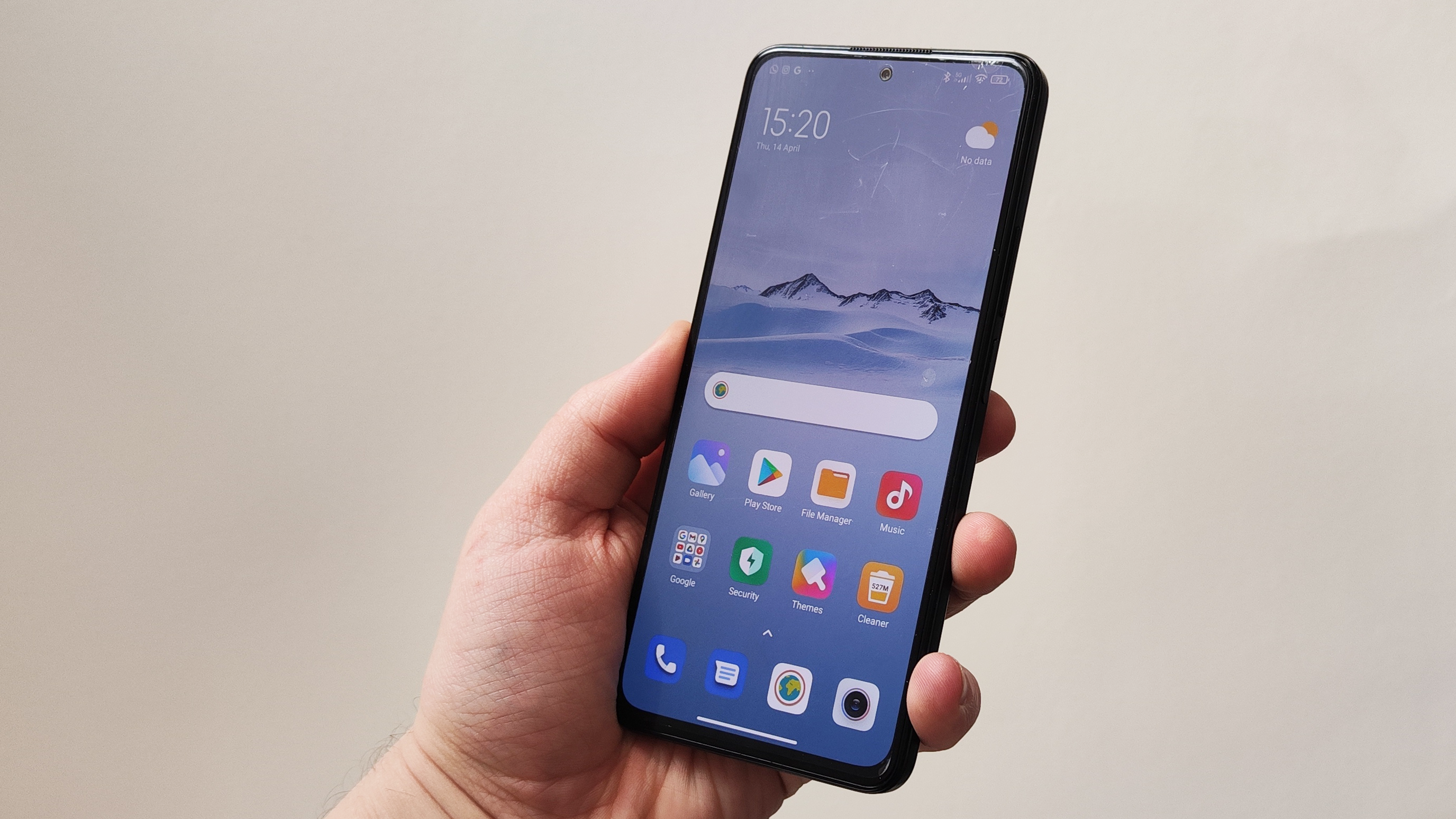
- 6.67-inch FHD+ AMOLED screen
- 120Hz refresh rate
- Broken up by small punch-hole camera
This phone has the ‘Xiaomi special’ display - the specs sheet is the same as on various Redmi, Poco and Mi phones.
That means it’s a 6.67-inch FHD+ display with a 120Hz refresh rate and Super AMOLED tech. Its max brightness of 1200 nits is impressively high for a budget phone; the viewing area is broken by a small ‘punch-hole’ cut-out for the front-facing camera.
For a phone of its price, the Redmi has a good-looking display; it was good for watching movies during our lunch break or playing quick games. Because of its size, though, some might find they have to stretch to reach the upper part of the display.
Xiaomi Redmi Note 11 Pro Plus cameras
- 108MP main, 8MP ultra-wide, 2MP macro, 16MP selfie
- Struggles with balaning snaps
- Portrait mode fares better
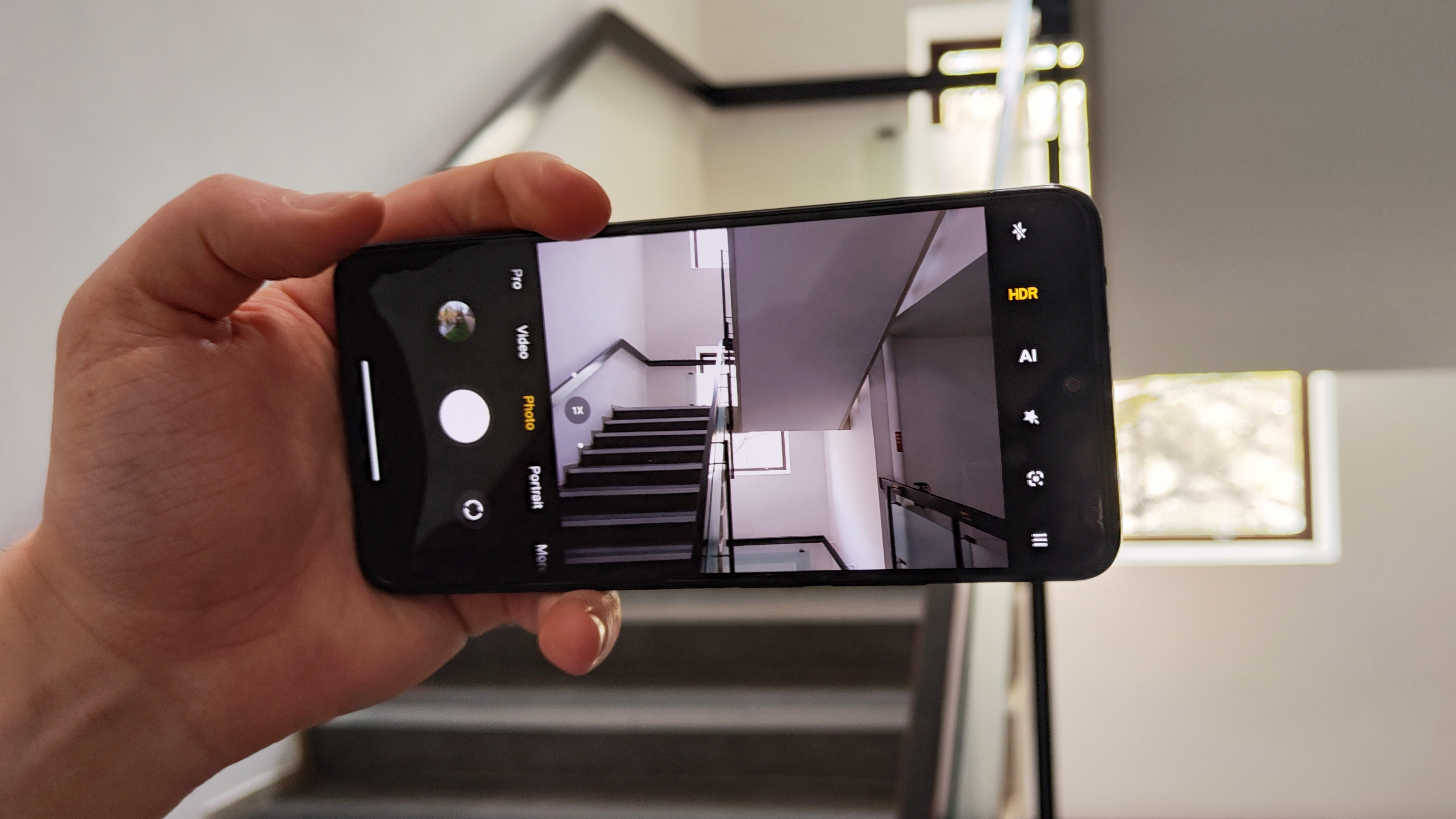
The Redmi Note 11 Pro Plus has three rear cameras: there’s a 108MP f/1.9 main, 8MP f/2.2 ultrawide and 2MP f/2.4 macro - notable because that’s the same as in the non-Plus version but without the latter’s depth sensor.
As with the non-Plus, we weren’t hugely impressed by the photography chops on display here - you can find better budget phone cameras at the same price.
The Redmi seems to struggle with balanced pictures. Sometimes snaps looked overexposed, but more often than not, they were underexposed, which makes photos look dull and unappealing. The sky was often a big problem, as the light from above blew out lots of photos.
Now and then, we took good-looking photos, but this wasn’t a fluke. To ensure snaps looked attractive, we had to jump into Pro mode and tweak some settings, or frame the picture to make sure the sky wasn’t dominating the background.


Some other modes fared a little better though - Portrait mode took snaps that were just fine, though we wish we could use a more enthusiastic adjective than ‘fine’. The pictures were more balanced than on the standard camera mode, but still a touch dim, and the bokeh background blur was a little soft-touch.
We weren’t as disappointed by the 16MP f/2.5 selfie camera, and it took pictures that were notably more bright and colorful than on the rear cameras.
Video recording here goes up to 4K at 30fps, and there are a few other modes, like Panorama and Night sight, but you’re not getting as big a range of extra features as on a flagship Xiaomi phone.
Camera samples








Xiaomi Redmi Note 11 Pro Plus performance and specs
- Dimensity 920 chip is good for price
- Phone connects to 5G networks
- Good for gaming
The Xiaomi Redmi Note 11 Pro Plus is fairly powerful for a phone of its price - sure, you’re not getting flagship power, but we were impressed by the performance.
The handset packs the mid-ranged MediaTek Dimensity 920 chipset, which we’ve also seen in the Vivo V23 and Realme 9 Pro Plus. It’s a chip generally offered on phones that straddle the line between budget and mid-range prices.
When we put the phone through the Geekbench 5 benchmark test, it returned a multi-core score of 2,175, which puts it in line with those other handsets we mentioned. It’s more powerful than a budget phone, but not as snappy as a true mid-ranger - which is exactly what you’d expect for a phone that sits between those categories in terms of price.
We took the phone for a spin with some games and found it played just fine, as long as we didn’t bump the graphics up to their highest options; it’s also fast enough for menu navigation and other simpler tasks.
You can use the phone to connect to 5G networks, if that’s something you want (or is even available in your country). That’ll be good news for people who like to stay connected, though we can’t help but picture a version of the phone where the price you’re paying for a 5G modem, is spent on other features instead.
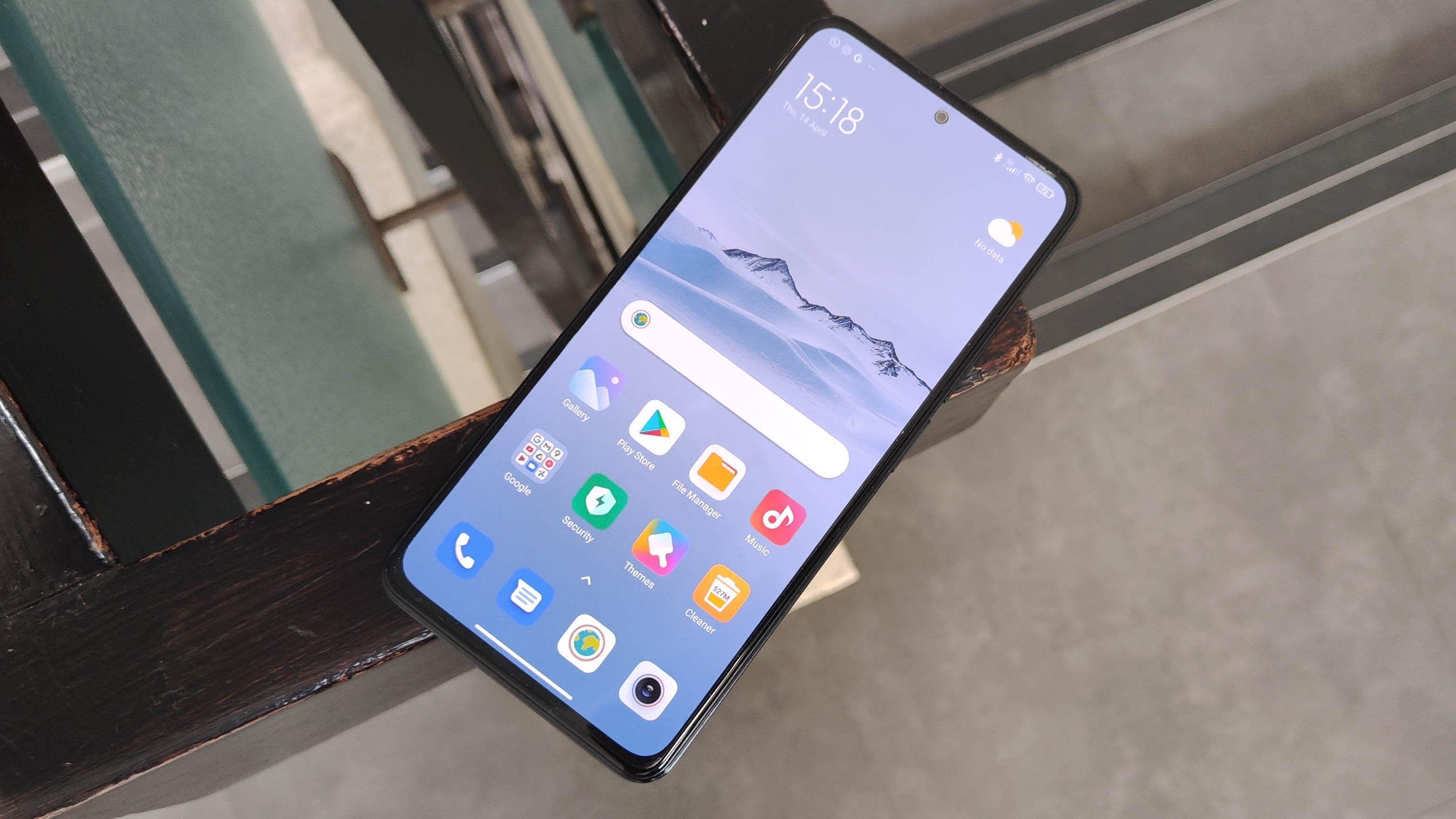
Xiaomi Redmi Note 11 Pro Plus software
- Android 11 with MIUI 12.5 laid over the top
- MIUI has useful iOS-style quick-settings menu
- Not as much bloatware as earlier Redmi phones
Curiously, the Redmi Note 11 Pro Plus comes on Android 11, which isn’t the newest version of Google’s operating system that’s available to mobile makers. The other Note 11 phones are the same, so we can’t be too surprised, but the software is a step behind in one odd way.
All the phones use Xiaomi’s Android fork called MIUI, but while the other Note 11 handsets use MIUI 13, you’re only getting MIUI 12.5 here - presumably, it’ll get updated at some point soon though.
MIUI is mainly an aesthetic change with design tweaks to app icons, menu layouts and more - you can probably get the gist of this from the pictures accompanying the review, but it’d be even better if you could get your hand on a Xiaomi phone to test it out.
One feature we like with this is the iOS-style swipe-down menus - in most Android forks you swipe down from the top to bring up your quick settings and notifications trays, but in MIUI you only summon the quick settings if you swipe from the right, with notifications from the left. When you get used to this, it’s a really useful extra feature.
MIUI was once a very bloatware-packed operating system - Xiaomi has gotten a bit better about this in recent years, though the Redmi still has a few annoying pre-installed stragglers when you boot up the phone, which you’ll likely want to uninstall.
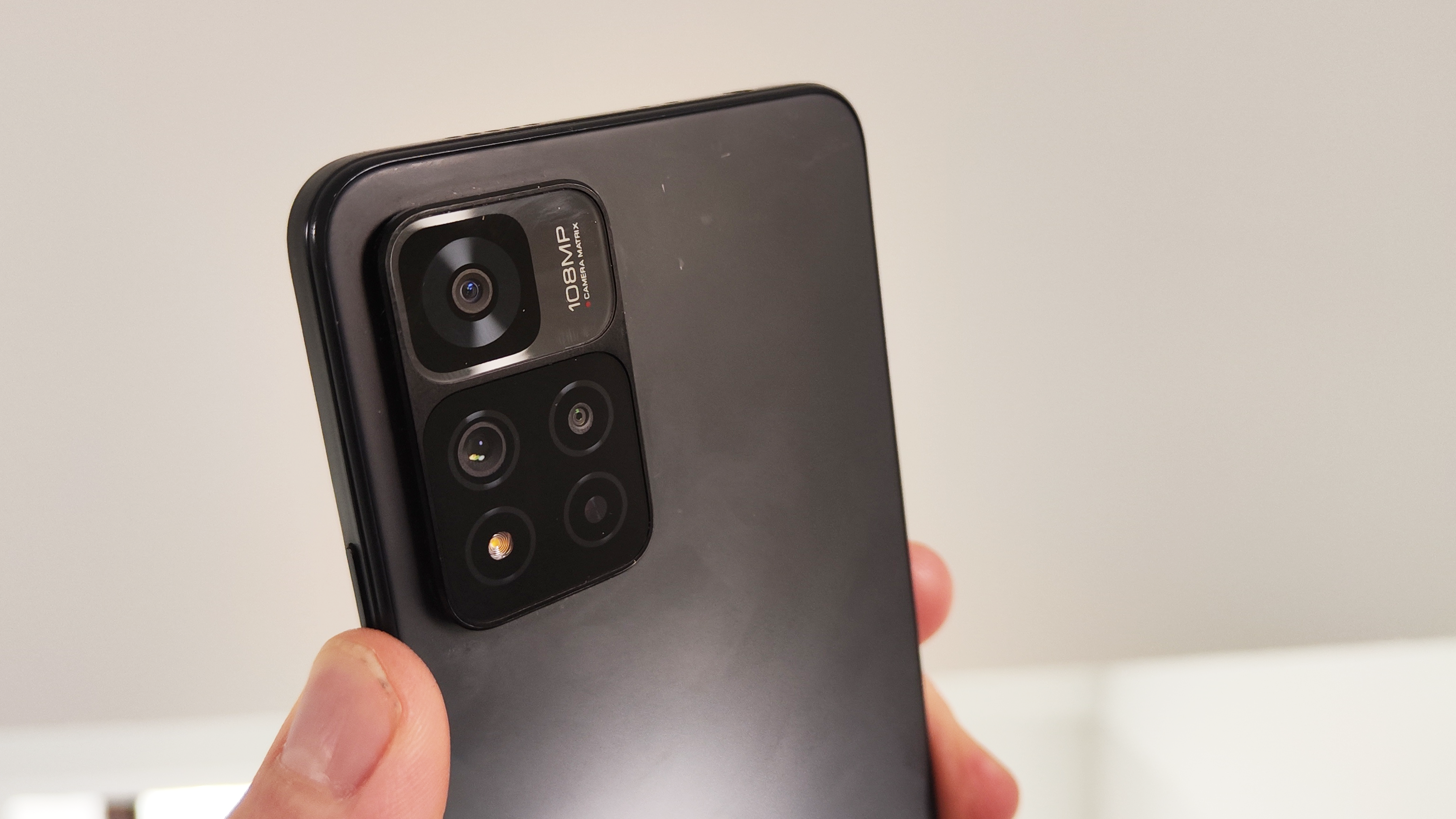
Xiaomi Redmi Note 11 Pro Plus battery life
- 4,500mAh lasts a good day
- Incredibly fast 120W fast charging
- That powers the phone to full in just 15 minutes
Xiaomi’s Redmi phones have often been great for battery life - that’s not the case here; we weren’t quite as blown away as we usually are.
The 4,500mAh battery will last you for a day, easily, but won’t stretch to a full second day - you’ll find yourself having to power up after about a day and a half if you’re ready to run your battery all the way down to zero.
That’s under intensive fire though, so with a fair dolloping of map navigation, video streaming and social media, this is still a fairly long-lasting phone.
Charging is one department where the phone does excel - at least in theory. The phone packs a whopping 120W powering, which Xiaomi says will power up the phone in just 15 minutes. Judging by our experience using other 120W phones, this claim is likely accurate.
Unfortunately, we weren’t shipped a version of the phone with a charger compatible in our region, so couldn’t quite test out this claim. Still, using a nearly-as-fast third-party charger, we still got impressive powering speeds.
There’s no wireless powering here, but with impressive wired charging, we can’t complain.
Should I buy the Xiaomi Redmi Note 11 Pro Plus?
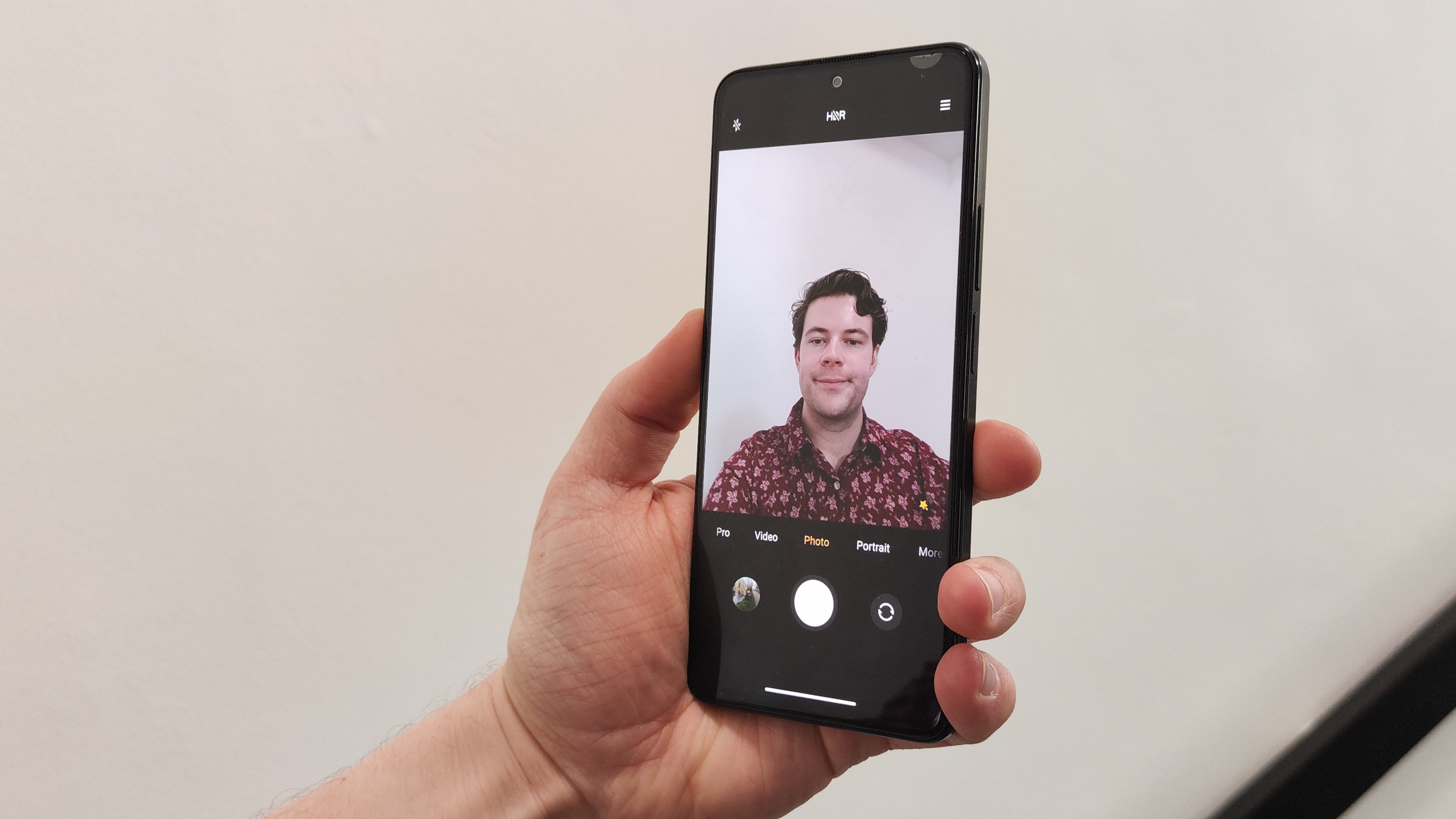
Buy it if...
You like fast charging
With its 120W powering, the Redmi will get you from empty to full really quickly, which is ideal for people who don’t like being tethered to their wall plug.
You want to game on a budget
The Dimensity 920 chipset here is quite good for a phone at this price, so if you like your gaming but don’t want a pricier phone, the Note 11 Pro Plus is a good bet.
You like a good screen
Thanks to its big and bright AMOLED screen, the Redmi is great for people who care about image quality, whether that’s for gaming or streaming movies.
Don't buy it if...
You’re a passionate photographer
Unless you want your pictures to be gloomy and somber, the Redmi will disappoint people looking for a budget camera phone. There are better options out there, even from Xiaomi.
You want a small phone
The Redmi is many things, but ‘small’ isn’t one of them. If you’ve got smaller digits, you’ll find this device a real stretch to use, so we can’t quite recommend it for all.
5G isn’t important to you
Xiaomi made some sacrifices bringing 5G to its budget phones, so if you don’t care about fast connections, you should look at the brand’s older devices.
Also consider
If this Xiaomi Redmi Note 11 Pro Plus review hasn't enlightened youas to your next phone purchase (or you don't want a phone with a name that long), here are some alternatives you could consider.
Xiaomi Redmi Note 10 Pro
Redmi’s last top-end phone is actually better than the newer ones in some ways, especially in the camera department, so it’s worth checking out for photography fans.
Check out our Xiaomi Redmi Note 10 Pro review
Realme 9 Pro Plus
This rival Pro Plus phone has better cameras and an interesting color-changing rear panel, though it’s not as quick to charge
Check out our Realme 9 Pro Plus review
iPhone SE 2022
iOS fans might want to consider the cheapest iPhone on the market, which is very powerful and runs Apple’s software, though it’s no better for photography and charges slower.
Check out our iPhone SE review
- First reviewed April 2022

Tom Bedford joined TechRadar in early 2019 as a staff writer, and left the team as deputy phones editor in late 2022 to work for entertainment site (and TR sister-site) What To Watch. He continues to contribute on a freelance basis for several sections including phones, audio and fitness.



